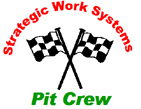Maintenance improvement practices take on many different appearances.
When looking for an elephant, many people think they need to know a lot of things about the beast. How do we track it? What does it eat? Where does it sleep? Where is it likely to hide on hot, sunny days? Where might it be when it’s cold and dark? Who might have seen the elephant last? When did they see it? Where was it headed?
In the world of manufacturing and facilities management, we often get called upon to find ways to improve maintenance. How do we track it? What does it cost? Why is maintenance really good at times; and other times, it’s in the pits? Who knows how good maintenance can and should be? Wait a minute. What is “maintenance” anyway? And this list too, goes on and on. So, how do you improve maintenance? And how do you find an elephant?
Maintenance improvement practices take on many different appearances. For example, there is preventive maintenance analysis and improvement. Then there is reliability centered maintenance (RCM). How about operator-performed maintenance and total productive maintenance (TPM)? Others include outsourcing specialized maintenance, supplier consolidation, and knowledge transfer. Then there’s lean manufacturing (and even “lean maintenance”) and the Kaizen initiatives.
Many of today’s maintenance improvement practices, initiatives, and activities are focused on gathering data, revising, refining, and re-doing preventive and predictive maintenance methods. Others are focused on reducing maintenance costs (labor, materials, outside services, etc.). And let’s face it: Some maintenance improvement initiatives are just plain “fads.” Maintenance improvement fads are characterized by the notion that “we hope this will make lasting improvements in maintenance” or “someone (who doesn’t know maintenance) says we have to do this or else.”
In a large number of plants and facilities, 30 to 40% of the maintenance hours worked are for reactive or emergency repair requests. Many of these “reactive” maintenance organizations did not used to be that way. They might have slipped into it because of cost improvement initiatives, re-organizations, or higher-than-normal technician turnover. Their equipment has become more problem-prone than in the past: Leaks have not been stopped, vibrations have not been curtailed, and root causes have not been addressed…“because we just don’t have the time or the resources.” In these “reactive” maintenance plants and facilities, it does not take a great deal of analysis to find out where and what the big problem is. It does not take lots and lots of data analysis to point to the biggest, most critical opportunity for improvement. It does not take a fancy maintenance improvement practice, initiative, or activity to address the problem. Consider these four basic steps:
Step 1 Focus on the biggest equipment-related interruption to production throughput. Look for the biggest equipment-related complaint in the facility. Look for the highest maintenance cost. Look for the area having the highest number of maintenance “emergencies.” Find the biggest elephant!
Step 2 Focus on the condition of the equipment identified in Step 1. Is the operational condition satisfactory? Or is it leaking, bouncing, missing parts, or patched together?
Step 3 Focus on the past year’s maintenance history for the equipment identified in Step 1. Are there indications of “pencil whipping” PMs? Are the PM tasks accurate and complete? Are the work orders and the CMMS reports reviewed periodically?
Step 4 Focus on the skills and knowledge of the people responsible for operations and maintenance of the equipment identified in Step 1. Are proper maintenance and operations skills being applied? Are proper operations and maintenance decisions being made and reinforced?
Sometimes in that great elephant hunt, we stumble across the beast when we least expect it. All that research and digging through tons of evidence just bogs us down. Rarely do we need a microscope to find the elephant. Improving maintenance in a “reactive” organization does not take a microscope either. Chances are these plants and facilities do not have the resources to undertake a widespread maintenance improvement effort in a sustainable manner. They often find themselves slipping deeper and deeper into reactive maintenance with no hope. They are surrounded by a heard of “invisible” elephants.
So what’s the bottom line? In a reactive maintenance facility, the goal might not be to improve “maintenance” but rather to improve the “equipment:” performance and reliability improvement of that most critical, high-maintenance-cost piece of equipment that contributes to the biggest interruption to production or the biggest complaint in the facility. Focus on proper operations and maintenance, make just those problems go away, and you have quickly reduced your costs and improved your business performance.
The best maintenance procedures, the best CMMS, and the best PM tasks and instructions in the world will rarely show a sustainable improvement if the equipment has significantly deteriorated and the people do not have the skills and knowledge for proper operations and maintenance. So before you set out to find that elephant in maintenance, be sure you know what you’re looking for. Sometimes, it’s disguised as a “people issue” or an “equipment problem” or even substandard maintenance and operations work methods. Just follow the tracks!
© 2003
Robert M. Williamson
Strategic Work Systems, Inc.
Columbus, NC 28722
[email protected]
![]() Download a PDF of this article by clicking here Finding the Elephant
Download a PDF of this article by clicking here Finding the Elephant
